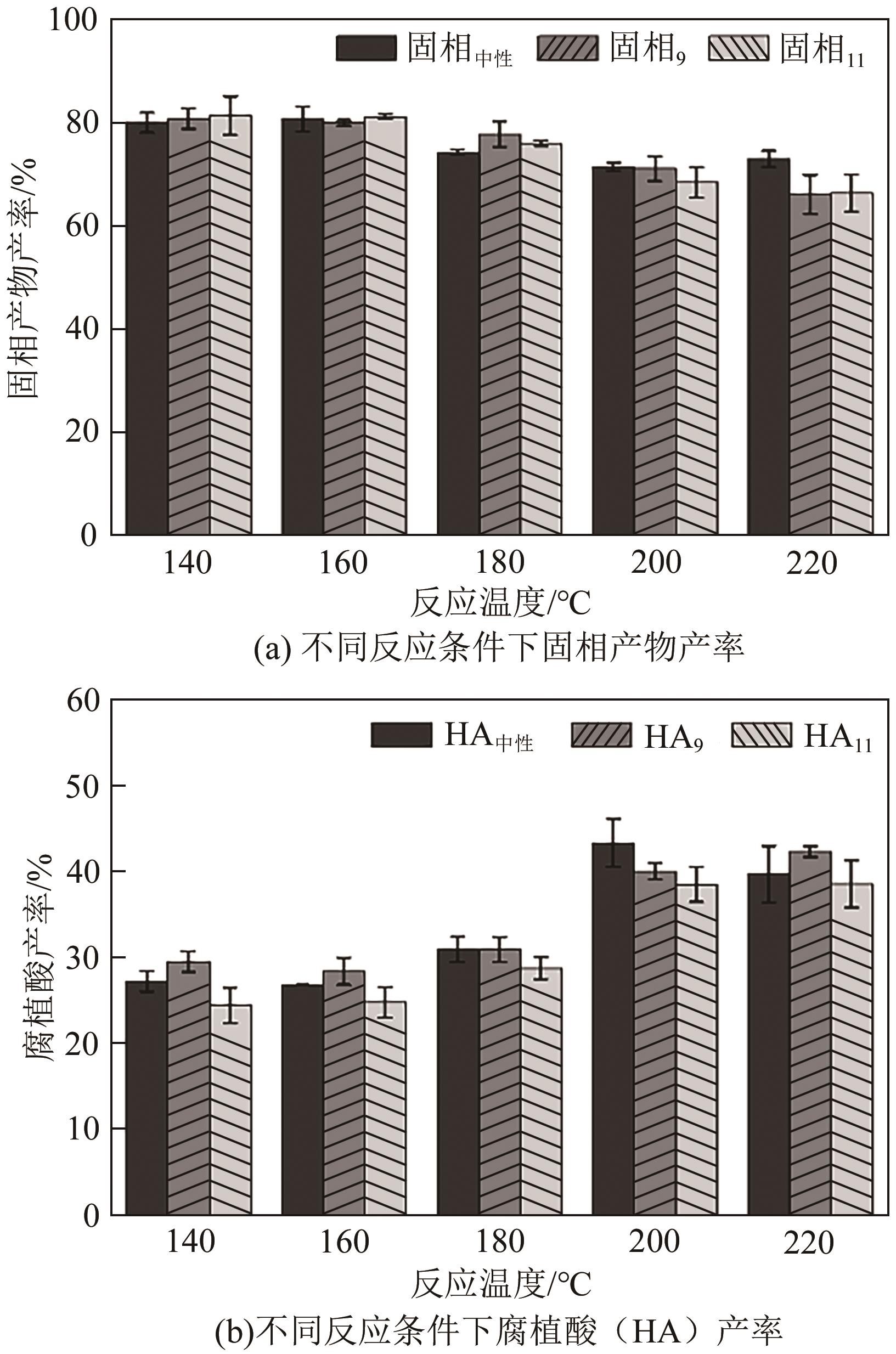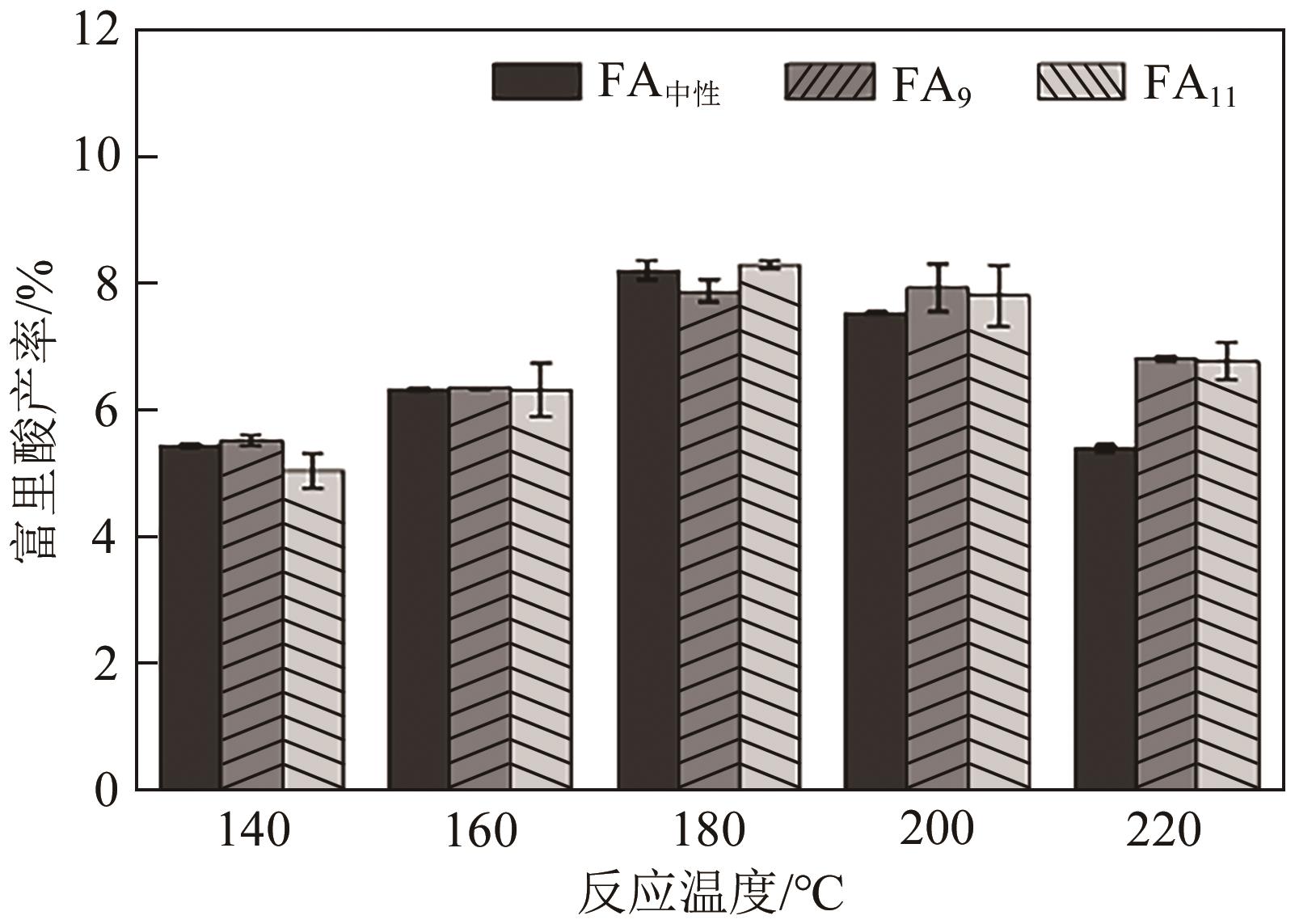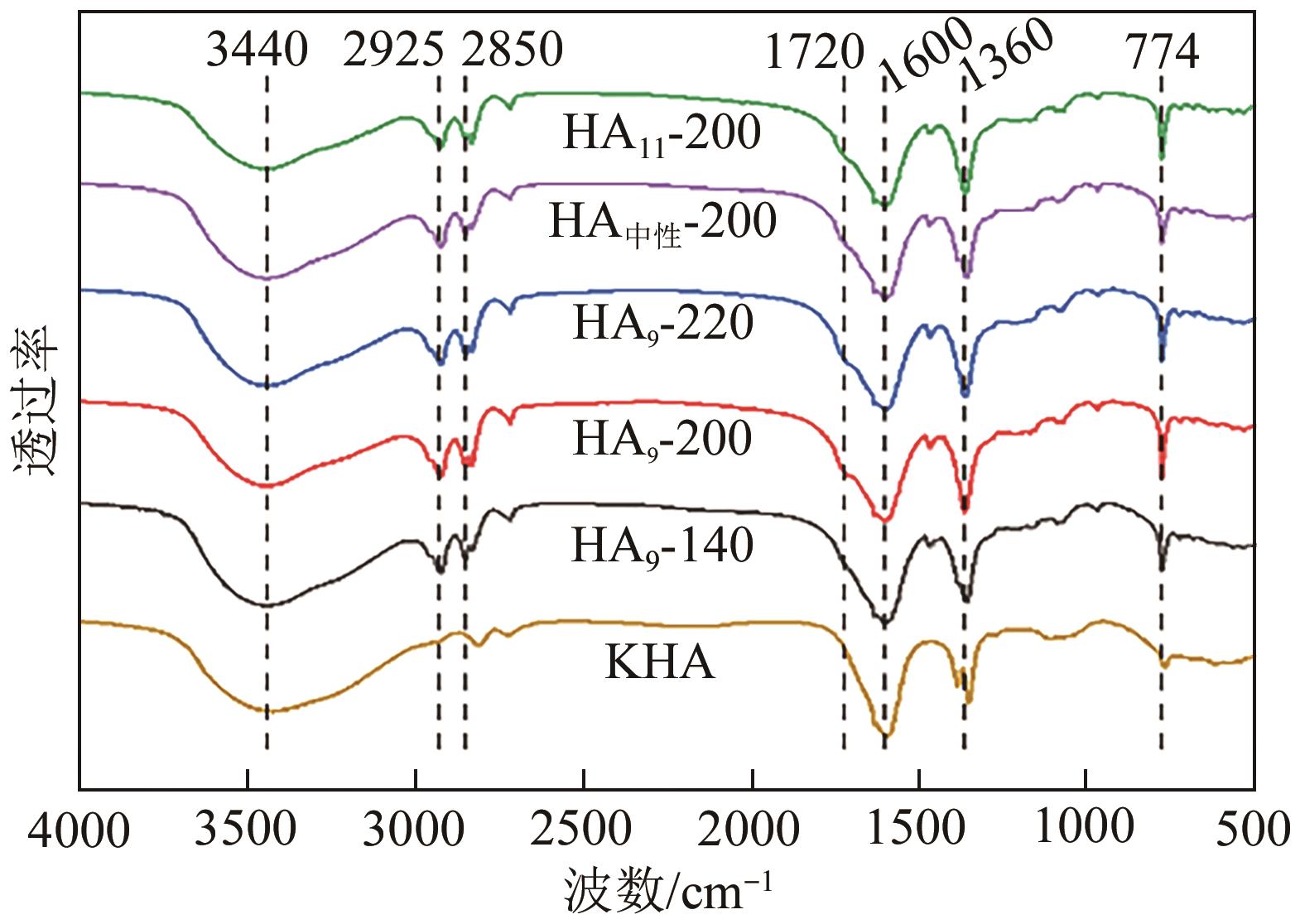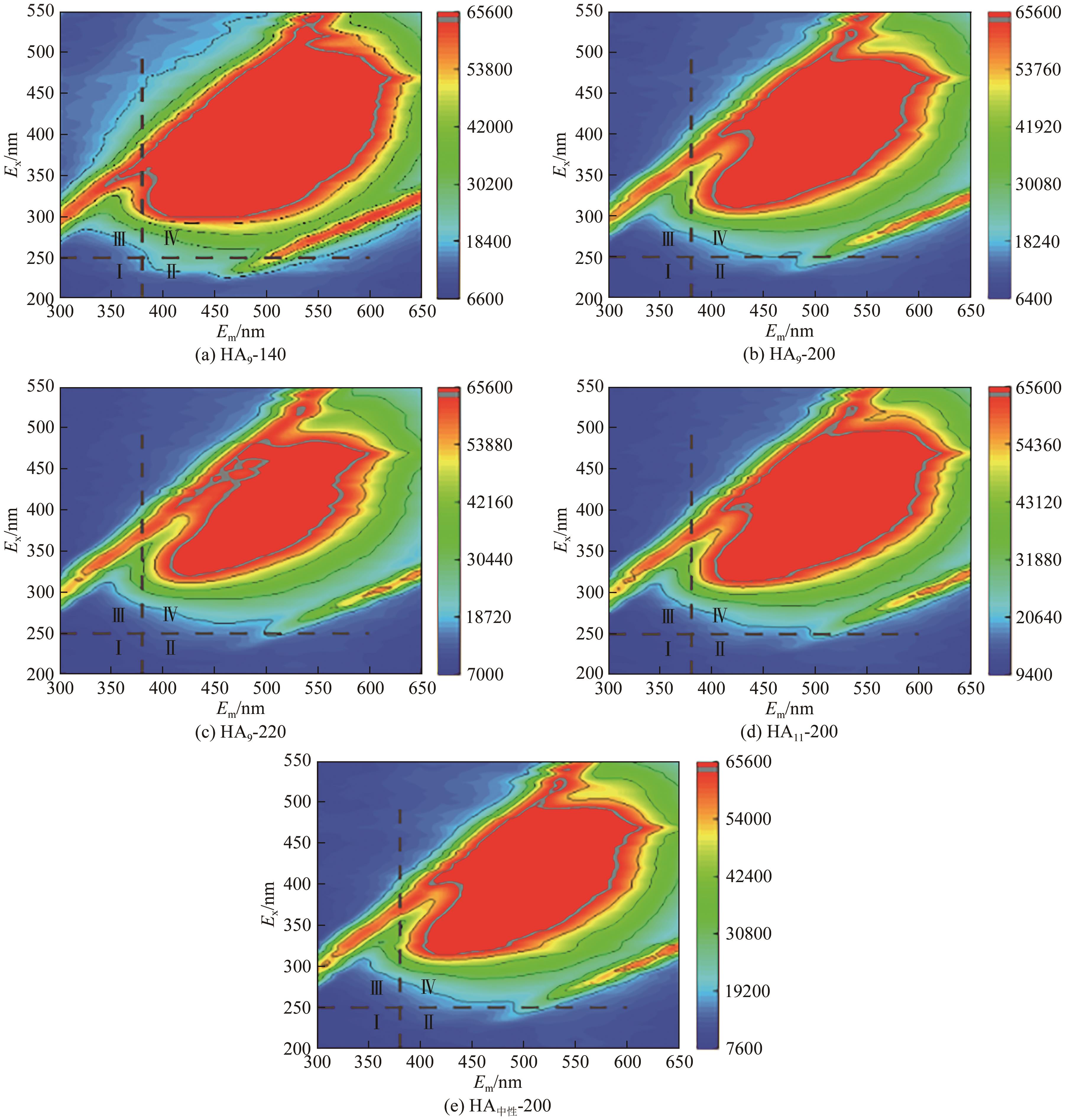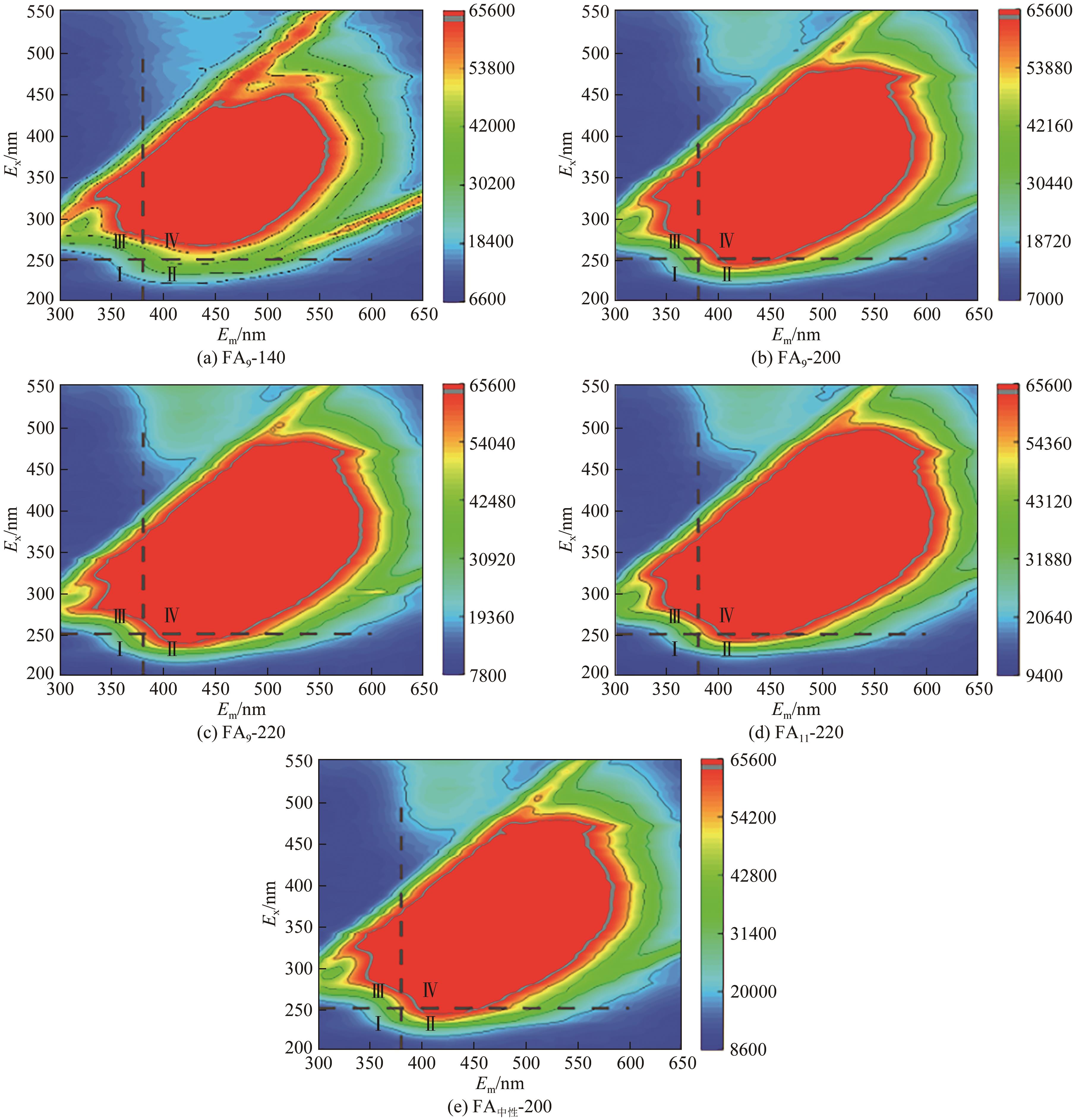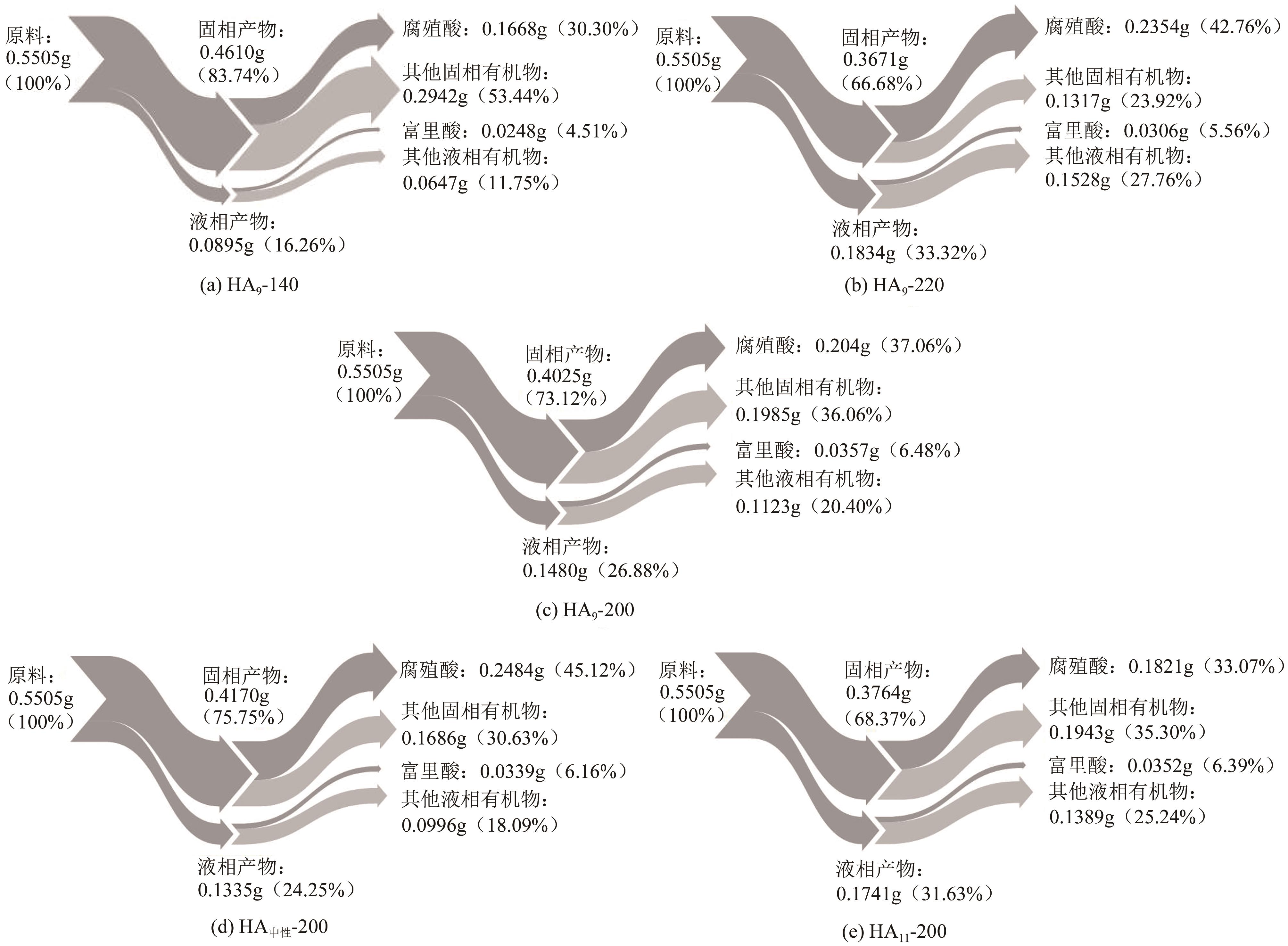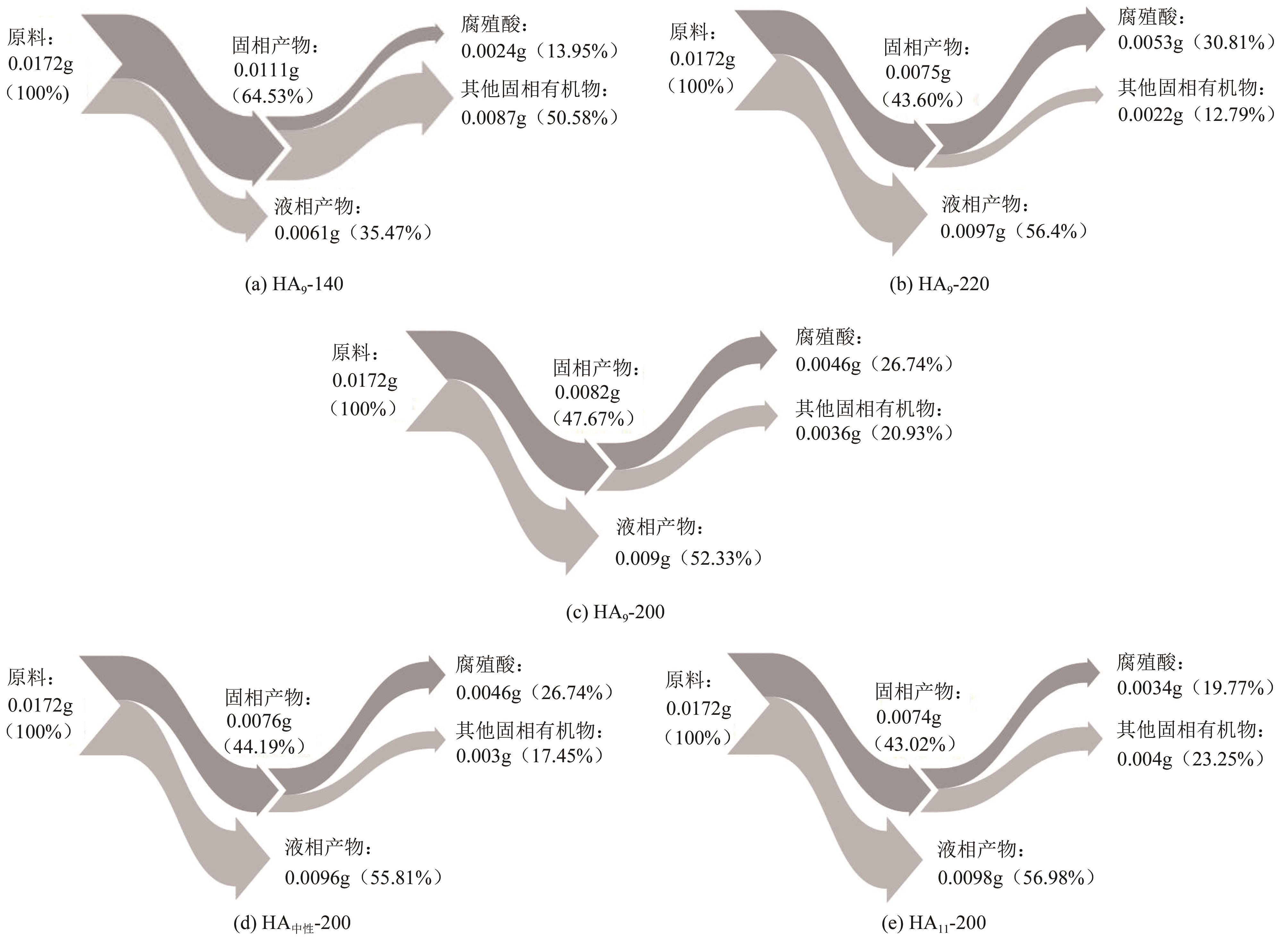Chemical Industry and Engineering Progress ›› 2024, Vol. 43 ›› Issue (12): 7033-7041.DOI: 10.16085/j.issn.1000-6613.2023-1986
• Resources and environmental engineering • Previous Articles
Impact factors and mass flow analysis of hydrothermal humification of food waste digestate
TANG Jingliang1,2( ), XING Tao2, ZHEN Feng2, ZHOU Zhengwei1(
), XING Tao2, ZHEN Feng2, ZHOU Zhengwei1( )
)
- 1.School of Environmental Science and Engineering, Changzhou University, Changzhou 213164, Jiangsu, China
2.Guangzhou Institute of Energy Conversion, Chinese Academy of Sciences, Guangzhou 510640, Guangdong, China
-
Received:2023-11-14Revised:2024-02-07Online:2025-01-11Published:2024-12-15 -
Contact:ZHOU Zhengwei
厨余沼渣水热腐殖化过程影响因素及物质流分析
- 1.常州大学环境科学与工程学院,江苏 常州 213164
2.中国科学院广州能源研究所,广东 广州 510640
-
通讯作者:周正伟 -
作者简介:汤晶亮(1998—),男,硕士研究生,研究方向为固废资源化。E-mail:1729660178@qq.com。 -
基金资助:黑龙江省重点研发计划(GY2021ZB0253)
CLC Number:
Cite this article
TANG Jingliang, XING Tao, ZHEN Feng, ZHOU Zhengwei. Impact factors and mass flow analysis of hydrothermal humification of food waste digestate[J]. Chemical Industry and Engineering Progress, 2024, 43(12): 7033-7041.
汤晶亮, 邢涛, 甄峰, 周正伟. 厨余沼渣水热腐殖化过程影响因素及物质流分析[J]. 化工进展, 2024, 43(12): 7033-7041.
share this article
Add to citation manager EndNote|Ris|BibTeX
URL: https://hgjz.cip.com.cn/EN/10.16085/j.issn.1000-6613.2023-1986
| pH | 140℃ | 160℃ | 180℃ | 200℃ | 220℃ |
|---|---|---|---|---|---|
| 中性 | 5.30 | 5.22 | 5.11 | 5.14 | 5.07 |
| 9 | 5.40 | 5.37 | 5.25 | 5.36 | 5.34 |
| 11 | 5.62 | 5.47 | 5.26 | 5.41 | 5.48 |
| pH | 140℃ | 160℃ | 180℃ | 200℃ | 220℃ |
|---|---|---|---|---|---|
| 中性 | 5.30 | 5.22 | 5.11 | 5.14 | 5.07 |
| 9 | 5.40 | 5.37 | 5.25 | 5.36 | 5.34 |
| 11 | 5.62 | 5.47 | 5.26 | 5.41 | 5.48 |
| 区域 | 物质 | Ex/nm | Em/nm |
|---|---|---|---|
| Ⅰ | 氨基酸、蛋白质类物质 | 200~250 | 280~380 |
| Ⅱ | 富里酸(FA)类物质 | 200~250 | 380~600 |
| Ⅲ | 溶解性微生物代谢产物 | 250~400 | 280~380 |
| Ⅳ | 腐殖酸(HA)类物质 | 250~500 | 380~600 |
| 区域 | 物质 | Ex/nm | Em/nm |
|---|---|---|---|
| Ⅰ | 氨基酸、蛋白质类物质 | 200~250 | 280~380 |
| Ⅱ | 富里酸(FA)类物质 | 200~250 | 380~600 |
| Ⅲ | 溶解性微生物代谢产物 | 250~400 | 280~380 |
| Ⅳ | 腐殖酸(HA)类物质 | 250~500 | 380~600 |
| 1 | 曾谦, 倪哲, 陈君, 等. 有机固废沼渣特性及其资源化探究[J]. 环境工程, 2022, 40(12): 61-70, 78. |
| ZENG Qian, NI Zhe, CHEN Jun, et al. Organic waste digestate: A review of its characteristics and resources recovery[J]. Environmental Engineering, 2022, 40(12): 61-70, 78. | |
| 2 | 许凤智, 许传阳, 杨英, 等. 生物质废弃物水热制肥技术研究进展[J]. 应用化工, 2022, 51(6): 1833-1838, 1842. |
| XU Fengzhi, XU Chuanyang, YANG Ying, et al. Advances in hydrothermal fertilizer production technology from biomass waste[J]. Applied Chemical Industry, 2022, 51(6): 1833-1838, 1842. | |
| 3 | 舒迪, 熊晨, 池涌. 厨余垃圾水热处理的腐殖化特性研究[J]. 环境科学学报, 2016, 36(7): 2563-2570. |
| SHU Di, XIONG Chen, CHI Yong. Study on the humification of kitchen waste by hydrothermal treatment[J]. Acta Scientiae Circumstantiae, 2016, 36(7): 2563-2570. | |
| 4 | 杜昆, 池涌, 王立贤. 厨余垃圾水热转化制取有机肥的试验研究 [J]. 环境工程, 2023, 41(8): 162-168. |
| DU Kun, CHI Yong, WANG Lixian. An experimental study on production of organic fertilizer from food waste by hydrothermal conversion[J]. Environmental Engineering, 2023, 41(8): 162-168. | |
| 5 | SHAO Yuchao, GENG Yiqi, LI Zhihua, et al. Unlocking the potential of humic acid production through oxygen-assisted hydrothermal humification of hydrochar[J]. Chemical Engineering Journal, 2023, 472: 145098. |
| 6 | CHEN Pengfei, YANG Renjie, PEI Yuhou, et al. Hydrothermal synthesis of similar mineral-sourced humic acid from food waste and the role of protein[J]. Science of the Total Environment, 2022, 828: 154440. |
| 7 | DENG Fang, CAO Zhenglei, LUO Yiping, et al. Production of artificial humic acid from corn straw acid hydrolysis residue with biogas slurry impregnation for fertilizer application[J]. Journal of Environmental Management, 2023, 345: 118845. |
| 8 | 张志, 许传阳, 尚如静, 等. 水热处理对蔬菜废弃物资源化利用效益的研究[J]. 现代化工, 2023, 43(6): 218-221. |
| ZHANG Zhi, XU Chuanyang, SHANG Rujing, et al. Study on benefits in hydrothermal treatment of vegetable wastes[J]. Modern Chemical Industry, 2023, 43(6): 218-221. | |
| 9 | OPATOKUN Suraj Adebayo, KAN Tao, SHOAIBI Ahmed AL, et al. Characterization of food waste and its digestate as feedstock for thermochemical processing[J]. Energy & Fuels, 2016, 30(3): 1589-1597. |
| 10 | WANG Ning, HUANG Dandan, ZHANG Chao, et al. Long-term characterization and resource potential evaluation of the digestate from food waste anaerobic digestion plants[J]. Science of the Total Environment, 2021, 794: 148785. |
| 11 | KOLOKASSIDOU C, PASHALIDIS I, COSTA C N, et al. Thermal stability of solid and aqueous solutions of humic acid[J]. Thermochimica Acta, 2007, 454(2): 78-83. |
| 12 | WANG Ruxian, LI Dong, ZHENG Guoxiang, et al. Co-production of water-soluble humic acid fertilizer and crude cellulose from rice straw via urea assisted artificial humification under room temperature[J]. Chemical Engineering Journal, 2023, 455: 140916. |
| 13 | 张越, 肖雷, 姚菁华, 等. 生物转化腐殖酸制备饲料添加剂黄腐酸的工艺优化[J]. 中国饲料, 2017(19): 25-28. |
| ZHANG Yue, XIAO Lei, YAO Jinghua, et al. Technology optimization of humic acid as feed additive produced by fulvic acid biotransformation[J]. China Feed, 2017(19): 25-28. | |
| 14 | 李尚, 许旭, 陶巍, 等. 富里酸在土壤环境中的吸附研究[J]. 环境科学与管理, 2015, 40(3): 78-81. |
| LI Shang, XU Xu, TAO Wei, et al. Study on adsorption of fulvic acid in soil environment[J]. Environmental Science and Management, 2015, 40(3): 78-81. | |
| 15 | GHANIM Bashir M, KWAPINSKI Witold, LEAHY James J. Hydrothermal carbonisation of poultry litter: Effects of initial pH on yields and chemical properties of hydrochars[J]. Bioresource Technology, 2017, 238: 78-85. |
| 16 | WANG Lixian, CHI Yong, DU Kun, et al. Hydrothermal treatment of food waste for bio-fertilizer production: Formation and regulation of humus substances in hydrochar[J]. Science of the Total Environment, 2022, 838: 155900. |
| 17 | 王隽哲, 唐黎华, 郭建新. 碱催化下厨余垃圾中白菜叶的水热转化[J]. 环境工程学报, 2017, 11(1): 578-581. |
| WANG Junzhe, TANG Lihua, GUO Jianxin. Alkali catalysis hydrothermal conversion of cabbage leaf in kitchen waste[J]. Chinese Journal of Environmental Engineering, 2017, 11(1): 578-581. | |
| 18 | WANG Lixian, CHI Yong, DU Kun, et al. Hydrothermal treatment of food waste for bio-fertilizer production: Regulation of humus substances and nutrient (N and P) in hydrochar by feedwater pH[J]. Waste and Biomass Valorization, 2023, 14(8): 2767-2781. |
| 19 | SUI Wenjie, LI Shunqin, ZHOU Xiaodan, et al. Potential hydrothermal-humification of vegetable wastes by steam explosion and structural characteristics of humified fractions[J]. Molecules, 2021, 26(13): 3841. |
| 20 | ZHANG Chao, SHAO Mingshuai, WU Huanan, et al. Management and valorization of digestate from food waste via hydrothermal[J]. Resources, Conservation and Recycling, 2021, 171: 105639. |
| 21 | 王文祥, 张雷, 李爱民. 废弃生物质水热腐殖化产物与介质酸碱性响应关系[J]. 大连理工大学学报, 2022, 62(1): 9-17. |
| WANG Wenxiang, ZHANG Lei, LI Aimin. Response relationship of hydrothermal humification products of waste biomass with acid-base property of medium[J]. Journal of Dalian University of Technology, 2022, 62(1): 9-17. | |
| 22 | WANG Chenyu, FAN Yujie, HORNUNG Ursel, et al. Char and tar formation during hydrothermal treatment of sewage sludge in subcritical and supercritical water: Effect of organic matter composition and experiments with model compounds[J]. Journal of Cleaner Production, 2020, 242: 118586. |
| 23 | YANG Fan, ZHANG Shuaishuai, CHENG Kui, et al. A hydrothermal process to turn waste biomass into artificial fulvic and humic acids for soil remediation[J]. Science of the Total Environment, 2019, 686: 1140-1151. |
| 24 | CHENG Gan, NIU Zeyu, ZHANG Chuanxiang, et al. Extraction of humic acid from lignite by KOH-hydrothermal method[J]. Applied Sciences, 2019, 9(7): 1356. |
| 25 | JACQUIN Céline, LESAGE Geoffroy, TRABER Jacqueline, et al. Three-dimensional excitation and emission matrix fluorescence (3DEEM) for quick and pseudo-quantitative determination of protein- and humic-like substances in full-scale membrane bioreactor (MBR)[J]. Water Research, 2017, 118: 82-92. |
| 26 | 傅平青, 刘丛强, 尹祚莹, 等. 腐殖酸三维荧光光谱特性研究[J]. 地球化学, 2004, 33(3): 301-308. |
| FU Pingqing, LIU Congqiang, YIN Zuoying, et al. Characterization of humic acid by three dimensional excitation emission matrix fluorescence spectroscopy[J]. Geochimica, 2004, 33(3): 301-308. | |
| 27 | SHAO Yuchao, HUO Weizhong, YE Rong, et al. Hydrothermal humification of lignocellulosic components: Who is doing what?[J]. Chemical Engineering Journal, 2023, 457: 141180. |
| 28 | ZHOU Yuxiao, HU Yuzhi, CHEN A J Y, et al. Environmental impacts and nutrient distribution routes for food waste separated disposal on large-scale anaerobic digestion/composting plants[J]. Journal of Environmental Management, 2022, 318: 115624. |
| 29 | GAO Shumei, LU Dan, QIAN Tingting, et al. Thermal hydrolyzed food waste liquor as liquid organic fertilizer[J]. The Science of the Total Environment, 2021, 775: 145786. |
| [1] | LI Xin, YANG Zao, ZHONG Xinru, HAN Haoxuan, ZHUANG Xuning, BAI Jianfeng, DONG Bin, XU Zuxin. Binding mechanism of Pb2+ onto humic acids from sludge hyper-thermophilic composting [J]. Chemical Industry and Engineering Progress, 2023, 42(9): 4957-4966. |
| [2] | WANG Zhicai, LIU Weiwei, ZHOU Cong, PAN Chunxiu, YAN Honglei, LI Zhanku, YAN Jingchong, REN Shibiao, LEI Zhiping, SHUI Hengfu. Synthesis and performance of a superplasticizer based on coal-based humic acid [J]. Chemical Industry and Engineering Progress, 2023, 42(7): 3634-3642. |
| [3] | WANG Yu, YU Guangwei, JIANG Ruqing, LI Changjiang, LIN Jiajia, XING Zhenjiao. Adsorption of ciprofloxacin hydrochloride by biochar from food waste digestate residues [J]. Chemical Industry and Engineering Progress, 2023, 42(4): 2160-2170. |
| [4] | WANG Yu, YU Guangwei, LIN Jiajia, LI Changjiang, JIANG Ruqing, XING Zhenjiao, YU Cheng. Preparation of building ceramsite from food waste digestate residues, incineration fly ash and sludge biochar [J]. Chemical Industry and Engineering Progress, 2023, 42(2): 1039-1050. |
| [5] | ZHU Yihao, ZHAO Baihang, WANG Chun, ZHANG Yuqing, YANG Haishan. Humic acid adsorption removal by modified coal gangue-based zeolite [J]. Chemical Industry and Engineering Progress, 2023, 42(10): 5531-5537. |
| [6] | LU Yao, WANG Peng, YIN Mengnan, YANG Mingyi, ZHANG Huang. Characteristics and influencing factors of environmental persistent free radicals of humic acid extracts from different types of soil [J]. Chemical Industry and Engineering Progress, 2021, 40(5): 2917-2927. |
| [7] | TANG Anzhong, XU Qike. Research progress on the removal of humic acids from water by oxidation and its derived hybrid processes [J]. Chemical Industry and Engineering Progress, 2021, 40(12): 6889-6896. |
| [8] | Minru ZHOU,Pei YAO,Qimeng ZHANG,Shubai LI,Yuan LIU,Shouxin XIA. Preparation of magnetic humic acid adsorbent and its application in the removal for Cu(Ⅱ) [J]. Chemical Industry and Engineering Progress, 2020, 39(3): 1145-1152. |
| [9] | YAN Pingping, SUI Qian, LÜ Shuguang, QIU Zhaofu. Removal of sulfamethoxazole by ferrous-activated sodium percarbonate in the aqueous phase [J]. Chemical Industry and Engineering Progress, 2018, 37(09): 3635-3639. |
| [10] | RAU Juiyeh, MAO Zhujian, LIN Jingjing, LIAO Xialu, HU Jiapeng, LIN Hao. Removal of humic acid from water and fouling mechanism by photocatalytic membrane [J]. Chemical Industry and Engineering Progress, 2018, 37(09): 3649-3656. |
| [11] | YANG Tao, QIAO Bo, LI Guochao, LIU Fen, BO Ling. Effects of photocatalysis on membrane fouling in cross-flow system with multichannel ceramic ultrafiltration membrane for removal of humic acid [J]. Chemical Industry and Engineering Progress, 2017, 36(11): 4293-4300. |
| [12] | WANG Pingyan, LU Xuyang, TIAN Jihong, LIU Mousheng, WANG Hailong, QI Ziding. Cascade utilization characteristics of Zhaotong lignite “extraction of humic acid from it——low temperature pyrolysis of humin” [J]. Chemical Industry and Engineering Progress, 2017, 36(07): 2443-2450. |
| [13] | HE Huan, SUI Qian, LÜ Shuguang, ZHAO Wentao, QIU Zhaofu. Effects of effluent organic matter on ozonation of sulpiride [J]. Chemical Industry and Engineering Progree, 2015, 34(3): 867-871. |
| [14] | LI Yanhong, ZHUANG Rui, ZHANG Zheng, ZHAO Wenbo, WANG Pingyan, XIA Jupei, LI Guobin. Research on the structure, chemical composition and characterization of humic acid from lignite [J]. Chemical Industry and Engineering Progree, 2015, 34(08): 3147-3157. |
| [15] | CHENG Liang, XU Li, LUO Tingliang, ZHANG Baolin, LIU Guoji. Adsorption thermodynamics and kinetics of Cr(Ⅵ) of nanoscale humic acid [J]. Chemical Industry and Engineering Progree, 2015, 34(06): 1792-1798. |
| Viewed | ||||||
|
Full text |
|
|||||
|
Abstract |
|
|||||
